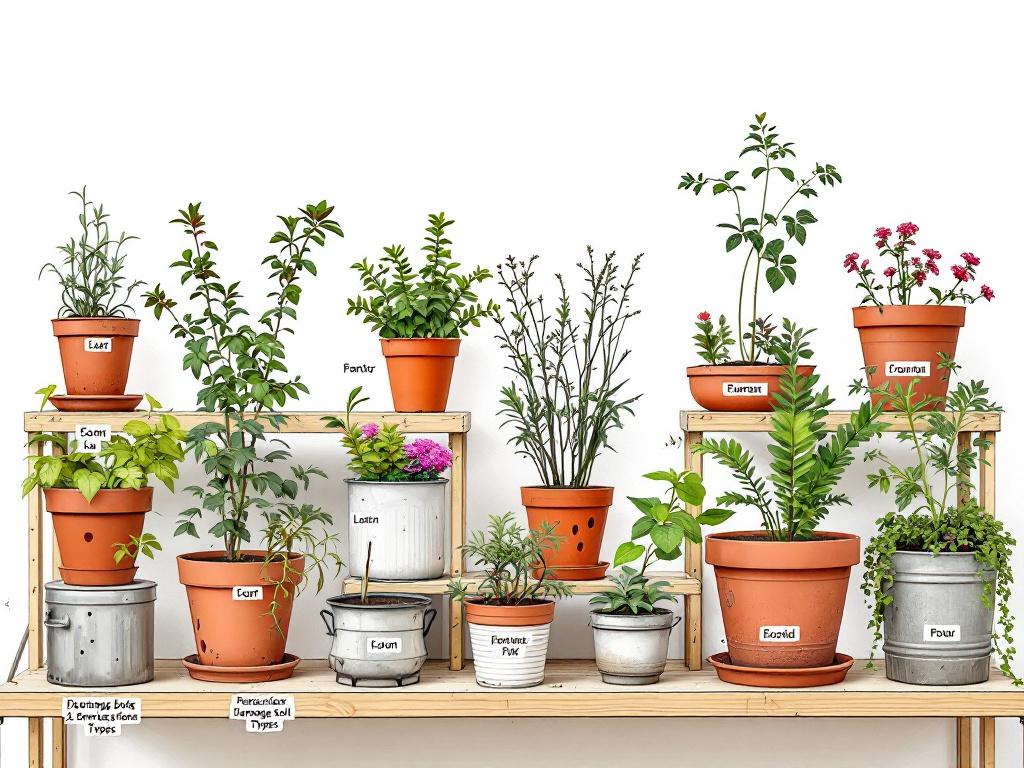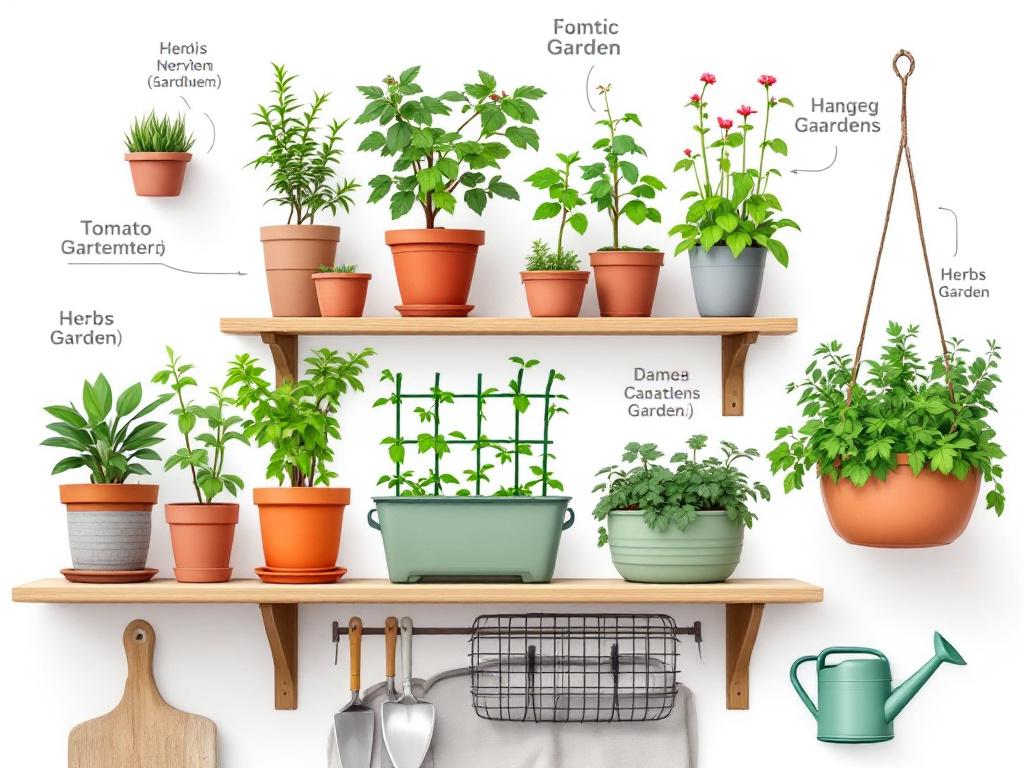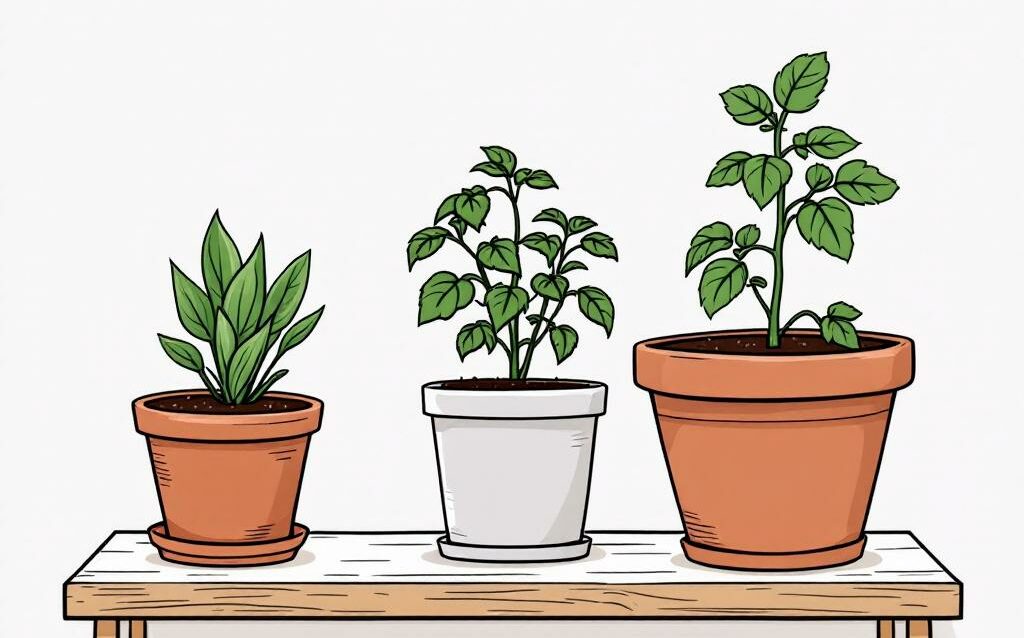Key Takeaways: Transform Any Small Space Into a Productive Garden
Container gardening offers the perfect solution for growing fresh vegetables and herbs regardless of your living situation. Whether you have a windowsill, balcony, patio, or rooftop, containers allow you to grow an abundance of food with less maintenance than traditional gardens—fewer weeds, reduced pest problems, and targeted watering make this approach ideal for beginners with limited time and space[1][5][6]. Herbs like basil, parsley, thyme, mint, and cilantro thrive in containers, alongside compact vegetables such as cherry tomatoes and lettuce, providing fresh produce right at your fingertips[1][2].
The versatility of container gardening extends beyond just growing food—it offers complete control over your growing environment. With proper drainage, quality potting mix, and at least six hours of sunlight daily, you can create a productive garden that’s portable, efficient, and beautiful[4][7]. Containers can be moved to optimize sunlight exposure, protect plants from harsh weather, and even travel with you if you relocate, making this approach perfect for renters and those with challenging soil conditions or limited outdoor space[4][6].
Container Gardening for Small Spaces: Ultimate Beginner’s Guide
Container gardening transforms the smallest spaces—balconies, patios, windowsills, or tiny yards—into productive vegetable gardens without requiring extensive gardening experience. This versatile approach allows apartment dwellers and those with limited outdoor areas to grow fresh produce by using pots, buckets, wooden crates, or any vessel with proper drainage holes instead of traditional garden beds. With the right containers, quality potting mix, and appropriate plants, even complete beginners can create thriving mini-gardens that yield herbs, vegetables, and flowers in surprisingly small areas.
The beauty of container gardening lies in its accessibility and flexibility. Unlike conventional gardens, container plants can be positioned for optimal sunlight, moved to avoid harsh weather, and arranged to maximize vertical space. This method offers remarkable benefits beyond space efficiency, including reduced maintenance (fewer weeds), more targeted watering, easier pest management, and complete control over soil quality. Most importantly, it provides the satisfaction of growing your own food even when traditional gardening seems impossible.
- Perfect for urban environments with minimal outdoor space
- Requires less water than traditional garden beds
- Portable solution ideal for renters or those who might relocate
- Reduces physical strain with less bending and stooping

Best Vegetables and Herbs for Container Gardens
Compact vegetables and herbs are ideal for container gardens due to their shallow root systems and minimal space requirements. Herbs such as basil, parsley, thyme, mint, and cilantro thrive in containers as most need only 6-12 inches of soil depth and can be grown together in a single wide pot. These varieties are fast-growing, tolerate frequent harvesting, and provide continuous yields throughout the season. For best results, select a container that is at least a foot deep if growing taproot herbs like parsley or cilantro, and ensure proper drainage for Mediterranean herbs such as thyme and mint.
Vegetables well-suited to containers include cherry tomatoes, lettuce, spinach, peppers, and radishes. Cherry tomatoes and peppers produce abundant fruit on compact plants, especially when grown in 3–5 gallon pots, while leafy greens like lettuce and spinach flourish in shallow trays or window boxes. Radishes excel in small containers due to their quick growth cycle and limited root spread. These plants reliably deliver high yields in small spaces and can be positioned on patios, balconies, or windowsills for easy access and sunlight.
- Basil, thyme, and mint require only 1–2 gallon pots
- Lettuce, spinach, and radishes thrive in shallow containers
- Peppers and cherry tomatoes need 3–5 gallon pots for best results
- Mix compatible herbs in a single wide container for variety and efficient use of space
“Select compact or dwarf varieties for containers—these adapt best to limited root zones and maximize harvest in the smallest footprint.”

Essential Container Gardening Supplies and Setup
Setting up a successful container garden requires specific supplies tailored to the unique challenges of growing vegetables in limited spaces. The most crucial element is selecting appropriate containers—these can range from traditional clay pots and wooden boxes to repurposed buckets, fabric grow bags, and self-watering planters. Container size directly impacts plant health: shallow 6-inch containers work for lettuce, spinach, and herbs; 8-inch depths suit carrots and peppers; while tomatoes, broccoli, and eggplants require deeper 12-18 inch containers to accommodate their extensive root systems.
Proper growing medium and drainage are fundamental for container success. Unlike garden soil, which is too heavy and poorly draining for containers, use lightweight potting mix specifically formulated for container gardening—these typically contain peat moss or coconut coir, compost, and drainage-enhancing amendments like perlite. Drainage holes are essential in all containers, though contrary to popular belief, adding rocks to container bottoms doesn’t improve drainage and may actually create a « perched water table » that increases root rot risk.
| Vegetable Type | Minimum Container Depth | Suitable Container Size |
|---|---|---|
| Lettuce, Spinach, Herbs | 6 inches | 2+ gallons |
| Carrots, Peppers, Peas | 8-10 inches | 3-5 gallons |
| Tomatoes, Broccoli, Eggplants | 12-18 inches | 5+ gallons |
Maintenance Tips for Thriving Container Vegetables
Container-grown vegetables require more attentive maintenance than those grown in-ground due to restricted soil volume and faster moisture loss. Check soil moisture daily; water thoroughly when the top inch feels dry, ensuring excess drains out the container base. During hot periods, watering may be needed once or even twice daily for smaller pots. Drip irrigation or self-watering containers can help maintain consistent moisture and reduce manual effort.
- Water deeply—apply until water drains from the bottom.
- Feed every 2–4 weeks with balanced or slow-release fertilizer.
- Monitor for pests; routinely inspect leaves and soil surfaces.
- Utilize vertical supports or compact plant varieties to maximize space.
Fertilization is critical, as frequent watering leaches nutrients from limited soil; supplement with liquid feed or organic amendments as plants grow. Containers typically harbor fewer weeds and are easier to monitor for pests, simplifying overall upkeep and making them well-suited for gardeners with limited time.
« Container gardens dry out and deplete nutrients faster than in-ground beds, but their low weed pressure and portability make them far easier to manage for beginners. »
Conclusion
Container gardening offers an efficient and practical solution for growing vegetables in limited spaces, making it ideal for urban dwellers, renters, and beginners. By selecting suitable compact vegetables and herbs, using the right containers and soil, and following proper maintenance techniques, anyone can cultivate a productive and manageable garden regardless of space constraints.
This approach not only maximizes space but also provides greater control over soil quality, water usage, and plant health, allowing for healthier crops with less effort. Embracing container gardening transforms small balconies, patios, or windowsills into vibrant, productive gardens that bring fresh, homegrown vegetables within easy reach.
FAQ: Container Gardening Guide
Q: What are the best vegetables for container gardening in small spaces?
Compact vegetables like cherry tomatoes, lettuce, spinach, peppers, and radishes are ideal for container gardening. Herbs such as basil, parsley, thyme, mint, and cilantro also thrive in small spaces.
Q: What type of containers are suitable for container gardening?
Containers can be made of plastic, terracotta, or ceramic. Ensure they have drainage holes to prevent waterlogging. The size of the container should match the root system of the plant: larger for tomatoes, smaller for herbs.
Q: How often should I water my container garden?
Container gardens typically require more frequent watering due to the limited soil volume. Check the soil daily and water when the top inch feels dry to the touch.
Q: What kind of soil mix is best for container gardens?
A well-draining potting mix is essential. You can also mix potting soil with regular garden soil to improve moisture retention and root health.
Q: How do I fertilize my container garden?
Use a water-soluble fertilizer once a week. Dilute it to about 1:100 with water to avoid over-fertilization, which can damage roots.
Q: How do I manage pests in a container garden?
Inspect plants regularly for pests like aphids or whiteflies. Use organic pest control methods such as neem oil or insecticidal soap when necessary.
Q: Can I grow fruits in a container garden?
Yes, fruits like blueberries and raspberries can be grown in containers, but they require larger containers to accommodate their root systems.

